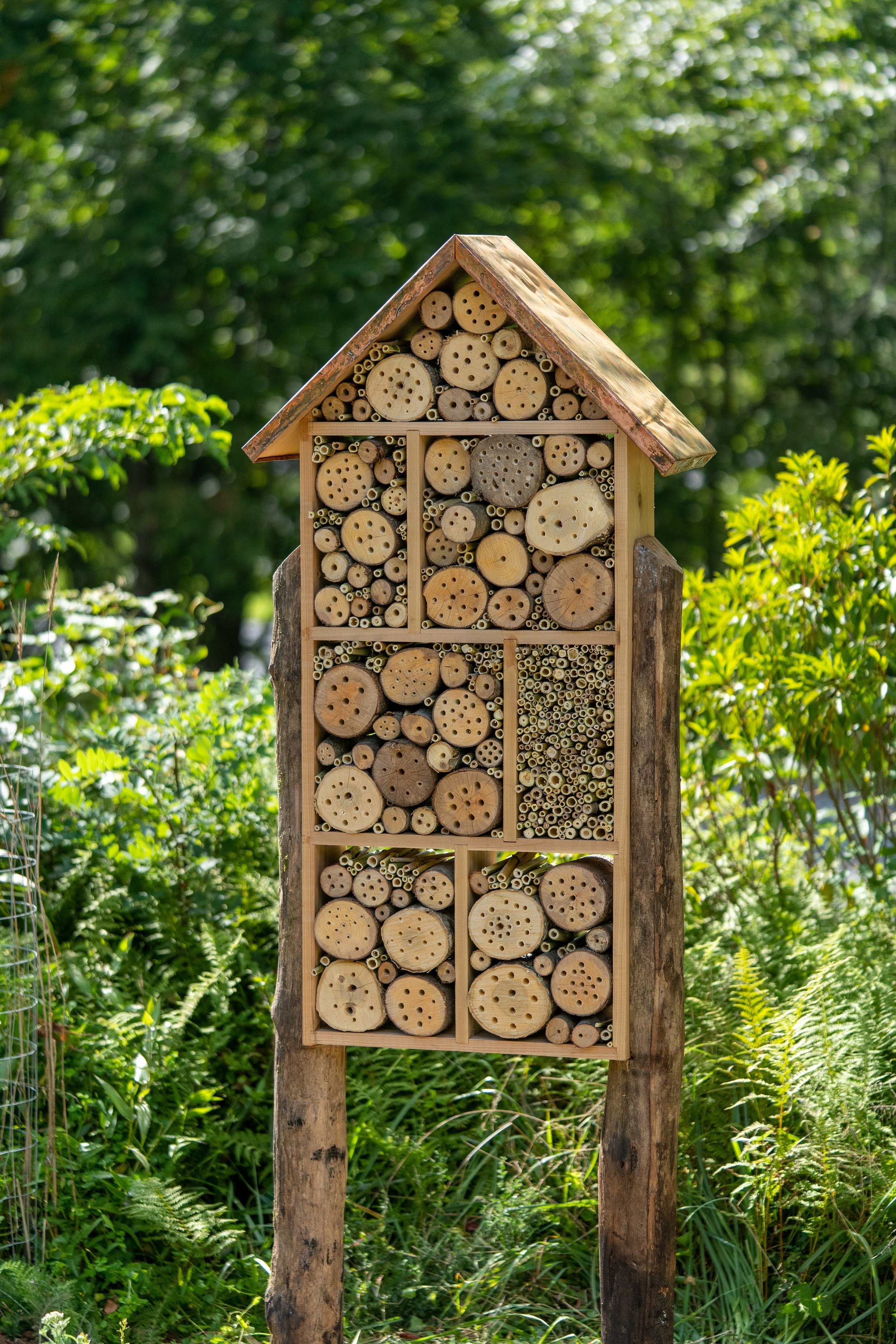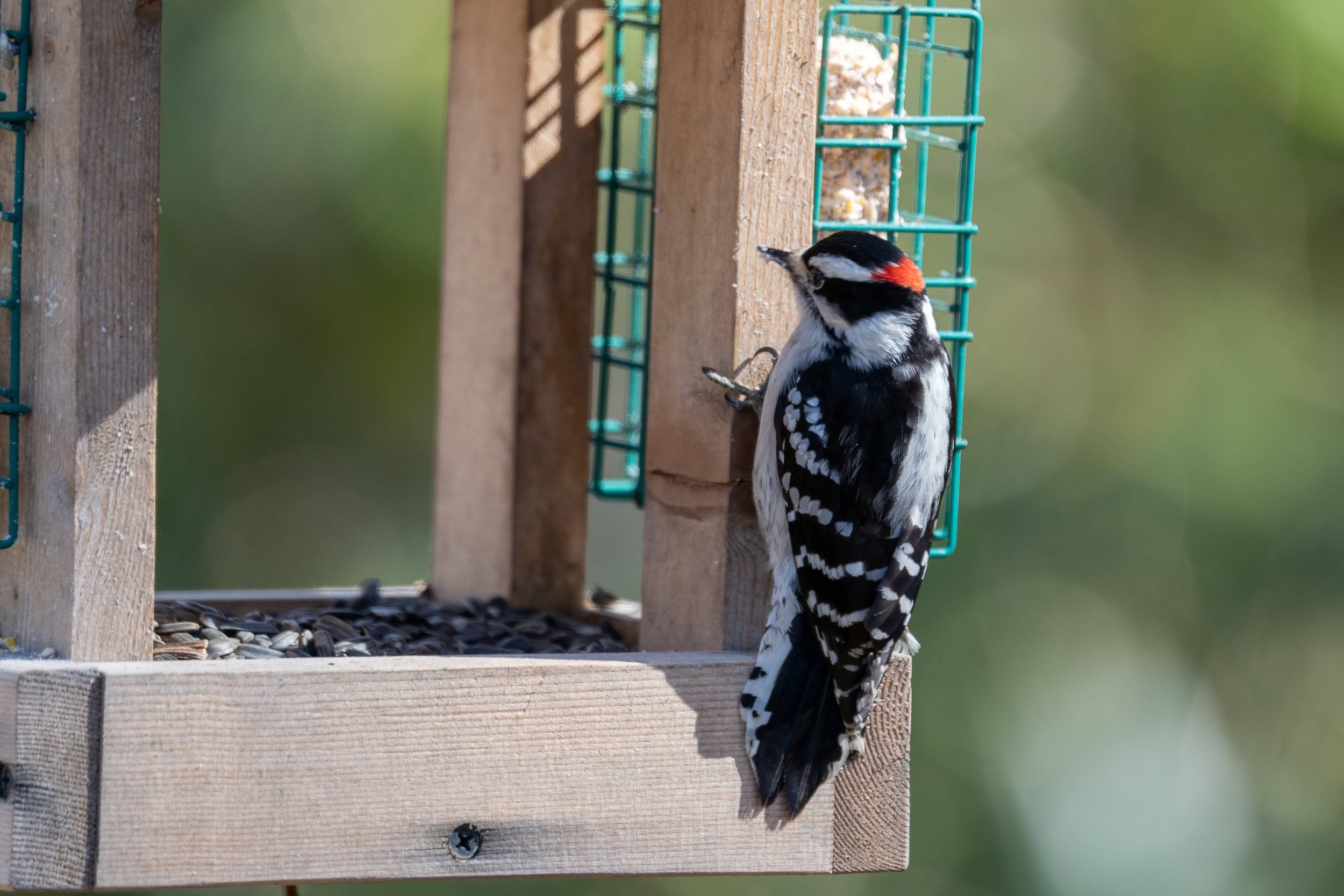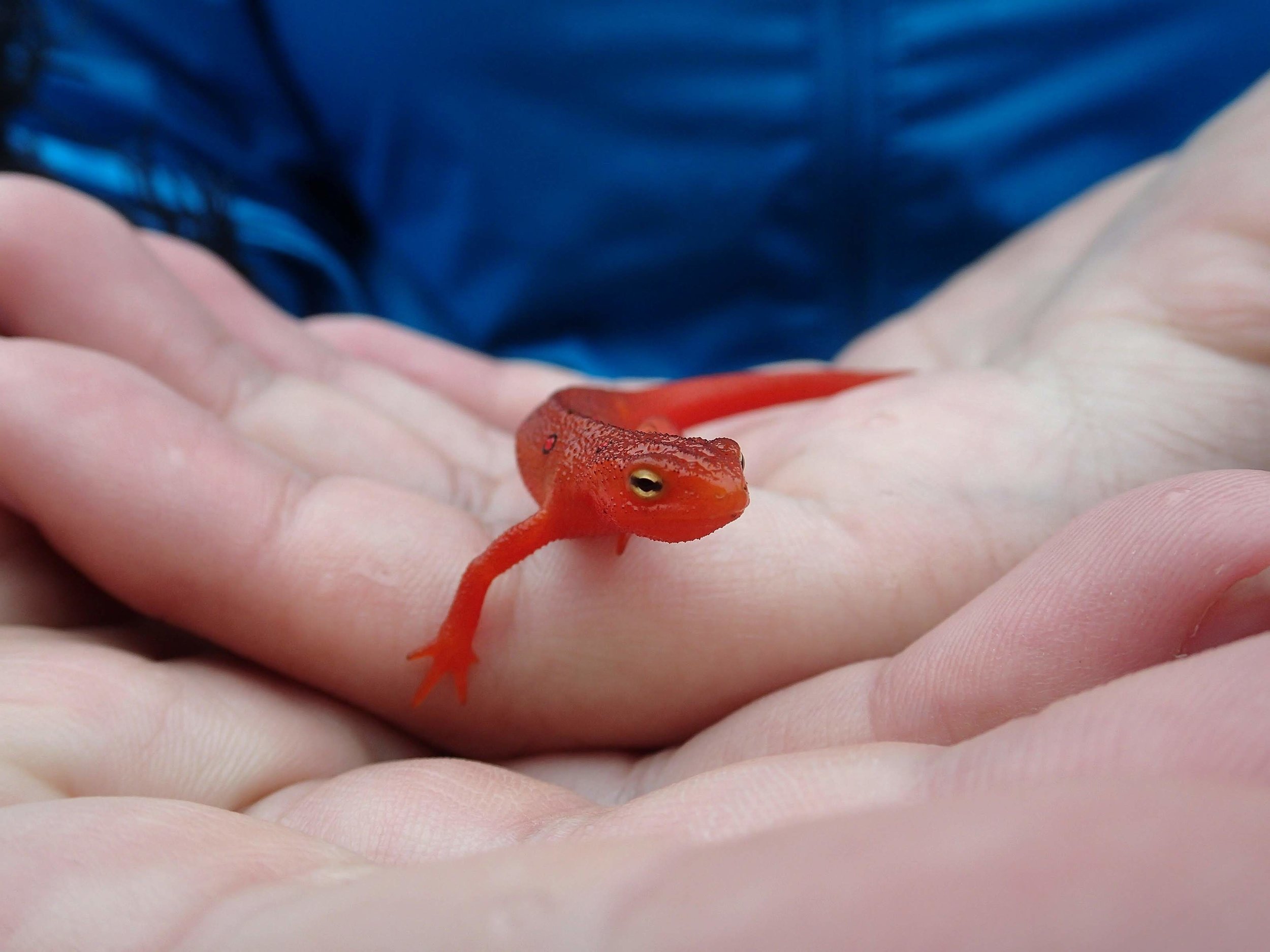

Hellbenders & Helene
Hellbender. Sounds like something out of a horror movie, right? With a flat head, tiny eyes, wide mouth, and long wrinkly body, hellbenders are certainly misunderstood and undervalued for the marvelous critters that they are–a unique regional treasure and an indicator species to overall ecological health.
Post Hurricane Helene and its devastating impact on southwest Virginia that began in late September of last year, people have been more curious than ever about what hellbenders are and how these animals are doing in the wake of such an unprecedented natural disaster.

Build a Bee Hotel for World Bee Day
In honor of World Bee Day, we’re cleaning up our native bee home here at Blue Ridge Discovery Center! One way we can support native bees is by building a “bee hotel”. These structures supply plenty of nesting opportunities to a few of the local bees. Adding a bee hotel to your garden is a great way to interact with some of these native species, and it can be an attractive feature to showcase local biodiversity.

Native Woodpeckers of the Blue Ridge Mountains
Who’s that knocking on your door? Who else but your friendly, neighborhood native woodpeckers! Here in the Blue Ridge Mountains, we’re lucky to have six native woodpecker species. And while they may all have their own unique features, they do share some common characteristics. Have you seen them all?

Little Drummer Boy: The Ruffed Grouse
Ever been in the woods and heard someone trying to start a car? More likely it was just a male ruffed grouse “drumming” by beating its wings back and forth very quickly.

Frozen Frogs: The Wood Frog's Unique Defense Against Winter Conditions
Arctic blast with its sub-freezing temperatures got you worried about all these critters in our lovely Blue Ridge mountains? You shouldn’t be! Many species have adaptations to help them survive winter conditions, but wood frogs have an especially incredible and effective method of surviving freezing temperatures—they freeze solid!

All it's Clocked Up to Be: Circadian Rhythms
Have you noticed that the days are getting shorter? You’re not the only one! We’re a little under two weeks away from the winter solstice, and subtle seasonal shifts like cooler temperatures and shorter days affect plants and animals (including humans!) in significant ways. Keep reading to learn about circadian rhythms and how animal and plant behavior changes throughout the year!

Out of Season Happenings
If you’ve ever thought that a warm November day feels more like spring than fall, you’re in good company. Many species depend on specific environmental cues to trigger physiological and behavioral changes.

The Rain Did NOT Dampen the Weekend
The 45th Annual Mount Rogers Naturalist Rally, held May 10th-12th was a big success!